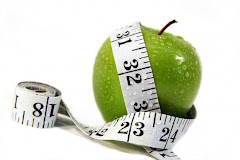Fighting fat and doing well, but reached an irritating plateau? Don’t give up just yet, writes naturopath Siobhan Jordan.
If you’ve reached the dreaded weight-loss plateau, don’t despair. This is common amongst those on weight-loss programs. More importantly, there are solutions.
Why, why, why?
A little background information: you may have embarked on a weight-loss program including dietary changes and an exercise routine. Chances are this has resulted in consistent, steady weight-loss.
Then comes a time when you’re doing the same healthy things, but the weight-loss has stopped. This is a natural physiological response – an anti-starvation mechanism that was especially helpful to your ancestors (when food scarcity was an issue).
Weight-loss plateaus usually result from your body’s response to the loss of fat tissue: it adjusts your metabolism to stop you losing more. This would be great if you were actually starving, but frustrating when you need to lose more weight for your health.
Solution revolution
To move past the plateau and kick-start further weight-loss, one of the most important principles is to re-evaluate your dietary and lifestyle habits. The following are important considerations and suggestions.
(1) Reconsider your meal portions
This is an essential area to revisit. Most people find that they can reduce the portions of 1-2 meals by a small amount, for example 10 – 15%, whilst still feeling satisfied and meeting nutritional and energy requirements. This may sound insignificant but this small change, over time, will contribute to weight-loss.
Use a diet diary to comprehensively assess how much you are actually eating. It is common to underestimate the amount we eat and/or overestimate how much we are exercising.
(2) Exercise – increase the intensity and/or frequency
This will provide a further boost to your metabolism and as such increase your energy-burning potential. For example, if you’ve previously been doing 30 minutes of exercise 4 times a week, consider increasing this to 45 minutes 4 times a week.
You may find a pedometer helpful in gauging how much you are moving and therefore how much you need to move in order to lose weight.
Don’t forget the value of incidental exercise too. Take the stairs instead of the lift/escalator, walk to the shops instead of driving etc.
Also, if you’re busy, you can break up your exercise over the day.
(3) Set an eating cut-off time
Avoid eating after dinner and aim to stop eating at least 2 hours before going to bed. Eating at this time is commonly an emotional/stress response, and even if it’s not, for many it’s a significant contributor to weight gain.
Look at other strategies to manage any challenging emotions eg. writing in a journal.
(4) Consider your weight-loss motivations and emotional eating
Spend some time reflecting on any emotional issues that you may have with food. Do you use food to manage difficult emotions and/or stress? What are your attitudes to food? Do you have any emotional blocks that may be preventing you from losing weight and/or maintaining weight-loss?
You may benefit from some professional counselling for further support.
Also, consider your motivations for weight-loss and revisit these each day to keep yourself focused and on track.
(5) Have an assessment with your healthcare professional
If you have carefully considered and implemented the above, yet you’re still struggling to lose weight, check-in with your healthcare professional.
You may need to have a medical evaluation to assess whether there are other causes preventing weight-loss.
Weight-loss plateau check list
1. Re-evaluate your meal portions
2. Increase the intensity and/or frequency of your exercise
3. Stop eating at least 2 hours before bed
4. Reflect on emotions and motivations
5. Check-in with your healthcare professional
Wednesday, January 23, 2008
Breaking through a weight-loss plateau
Posted by myfitmate at 5:41 PM
Labels: health and fitness, motivation, tips
Subscribe to:
Post Comments (Atom)











0 Comments:
Post a Comment